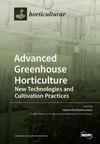A Species-Specific PCR Differentiates Two Causal Agents of Hazel Powdery Mildew and Reveals the Occurrence of Erysiphe corylacearum
IF 3.1
3区 农林科学
Q1 HORTICULTURE
引用次数: 0
Abstract
The demand for common hazel (Corylus avellana) fruit increases constantly. Powdery mildew (PM) on hazels in Hungary and throughout Europe was previously caused mainly by Phyllactinia guttata. However, less than a decade ago, another fungus of Asian origin, Erysiphe corylacearum, appeared on hazels in Europe, including Hungary. Our investigation aimed to develop a species-specific PCR (ssPCR) to aid the identification of P. guttata and E. corylacearum, and to assess the presence of the latter, non-native fungus in Hungary. For this study, 59 samples were collected from Hungary between 2021 and 2023. The chasmothecial morphology of the PM fungi was observed, and the internal transcribed spacer (ITS) of ribosomal DNA was sequenced in representative samples. Morphological analysis distinguished two types of chasmothecia. Parts of the chasmothecia, typical of P. guttata, were flattened and spherical with bristle-like appendages, while other chasmothecia, characteristic of E. corylacearum, were distinctly smaller, bearing appendages with branched apices. Sequence data also verified the presence of P. guttata and E. corylacearum in our samples. The developed ssPCR revealed that E. corylacearum was present in more than three-quarters of the samples, more than a quarter of the samples contained both fungi and about one-fifth carried solely P. guttata. The alien fungus E. corylacearum was found in all but one of the sampled regions and was found on C. avellana and also on C. colurna. Erysiphe corylacearum spreads rapidly and can be considered an invasive pathogen. Its practical importance lies in its ability to infect hazelnuts, potentially causing economic losses. Our ssPCR ensures accurate and quick identification of the fungus, which is essential for effective plant protection.物种特异性 PCR 可区分榛树白粉病的两种病原菌并揭示 Erysiphe corylacearum 的存在
对普通榛子(Corylus avellana)果实的需求不断增加。匈牙利和整个欧洲的榛子上的白粉病(PM)以前主要是由 Phyllactinia guttata 引起的。然而,不到十年前,另一种源于亚洲的真菌 Erysiphe corylacearum 出现在包括匈牙利在内的欧洲榛子上。我们的调查旨在开发一种物种特异性 PCR(ssPCR),以帮助识别 P. guttata 和 E. corylacearum,并评估匈牙利是否存在后一种非本地真菌。这项研究在 2021 年至 2023 年期间从匈牙利采集了 59 份样本。研究人员观察了 PM 真菌的虫体形态,并对代表性样本的核糖体 DNA 内部转录间隔(ITS)进行了测序。形态学分析区分了两种类型的隙菌。部分壳斗菌是 P. guttata 的典型特征,呈扁平球形,有鬃毛状附属物;而其他壳斗菌则是 E. corylacearum 的特征,明显较小,附属物顶端有分枝。序列数据也验证了样本中存在 P. guttata 和 E. corylacearum。开发的 ssPCR 显示,超过四分之三的样本中含有 E. corylacearum,超过四分之一的样本中同时含有这两种真菌,约五分之一的样本中只含有 P. guttata。外来真菌 E. corylacearum 在除一个地区外的所有采样地区都有发现,在 C. avellana 和 C. colurna 上也有发现。Erysiphe corylacearum传播迅速,可被视为一种入侵病原体。它的实际意义在于能够感染榛子,并可能造成经济损失。我们的 ssPCR 可确保准确快速地鉴定真菌,这对有效的植物保护至关重要。
本文章由计算机程序翻译,如有差异,请以英文原文为准。
求助全文
约1分钟内获得全文
求助全文
文献相关原料
| 公司名称 | 产品信息 | 采购帮参考价格 |
|---|

 求助内容:
求助内容: 应助结果提醒方式:
应助结果提醒方式:


